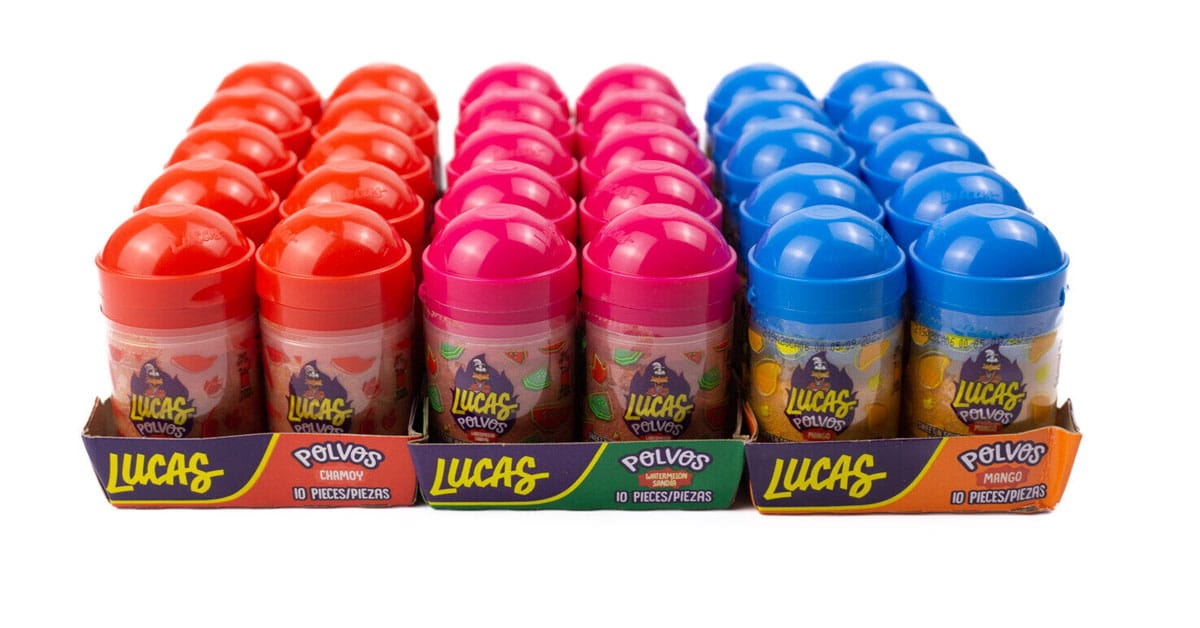Lucas Candy – Savory, Hot & Sweet Tastes Of Mexico
Lucas Candy is a unique sweets brand with out-of-this-world flavor combinations. Since the two siblings first created candies from tamarind pulp in 1986, these flavor explosions have elevated the candy-eating experience for enthusiasts all over the globe. One of the most flavorful and well-liked candies on the market, Lucas Mexican candy is distributed in numerous countries.
If you have ever tried Lucas Candy, you will definitely be surprised by its flavors. This article will tell you about the history, variations, and flavors of Lucas Candy.
Please leave a review or any memories of this snack in the comments at the bottom of this page. Thank you!
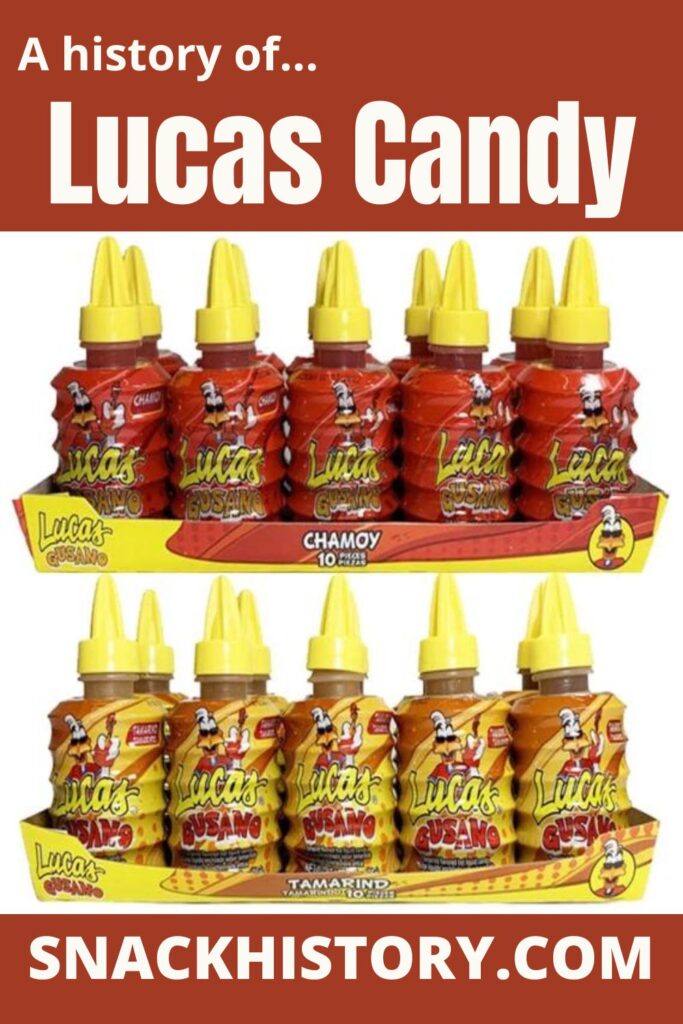
A Brief History
Hugo and Alejandro Martinez, two siblings, started making “Rico Pelo Loco,” a candy produced from the pulp of the tamarind fruit, in the year 1986 in the city of Monterrey, Nuevo Leon. The Martinez brothers had to start manufacturing more than 200,000 pieces per month after this new product caused such a sensation in Mexico. Soon after that, they decided to found a business called Alitec.
Alimentos Matre S.A. was founded a year later, following the development of a new brand identity for the business and fresh ideas for the products they made. For many years, they called their best-known and most emblematic product Lucas: “Lucas Acidito.” It had a taste of delectable chile powder with a lemon taste that helped the business expand significantly.
Through the years, Lucas Acidito developed into a company to provide customers with high-quality, cutting-edge confectionery goods in imaginative displays and packaging. This inspired them to develop goods that were novel to the sector and became household names for hot sweets.
Skwinkles, which are thin spaghetti-like strands flavored with fruit and served with a delicious sweet and sour chile sauce, was introduced by the Lucas Candy brand as its most innovative product in 1999. It rose to prominence in the Mexican confectionery market and paved the way for fresh products falling into the “sweet and hot spaghetti strips” category.
The greatest success for the business came in 2001, when their goods gained widespread recognition and started to be distributed in other regional markets, including North America, Europe Asia, and South America. This caught the eye of Grupo Mars Inc., a business that later bought the Lucas Candy brand name. They were given the opportunity to develop and grow along with their already well-known business.
By applying high-quality and effective techniques to the production and distribution of its products, the company, now known as Mars, has been distributing its signature products with great success.
Additionally, the Lucas Candy brand produces granulated seasonings for use in cooking. The Lucas Limon Powder was one of the company’s first creations after changing its name to Mars, and it has been a huge hit.
Most Popular Variations of Lucas Candy
One of the reasons why Lucas Candy has become a popular treat among candy lovers is its wide range of variations that offer unique flavors and textures. Here are some of the most popular Lucas Candy flavors:
Lucas Mango
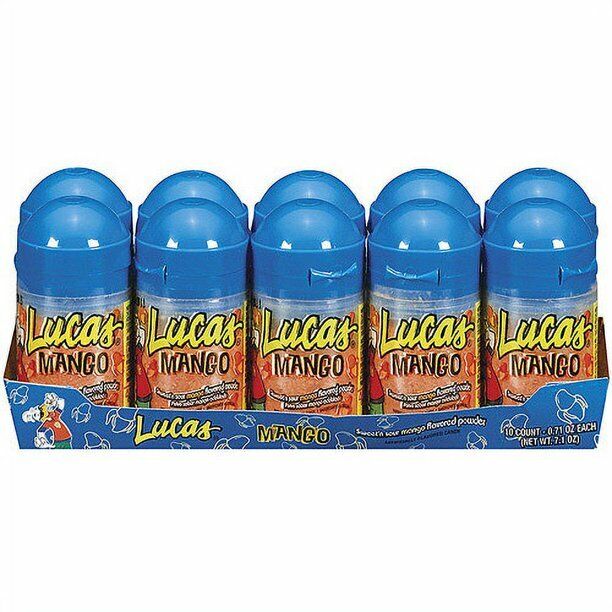
One of the most well-known Mexican sweets with a distinctive powdered consistency is Lucas Mango. Imagine it as a spice powder with a mango flavor that you can spout straight into your mouth or sprinkle over your favorite foods for a variety of flavors. Many people enjoy the sweet as a treat from their childhood because it has retained its beloved taste for years.
The delicious sweet, salty, and savory snack only has a mango flavor, as the name suggests. However, this flavor gives you a distinctive taste by fusing the richness of mango with the sourness and spiciness of chili pepper. It is packaged in a small, cute container.
That tangy powdered Lucas Candy can be eaten on its own or spread on tacos or other snacks. Also, the candy is available in a 10-pack of the long-lasting Lucas Mango.
Lucas Gusano
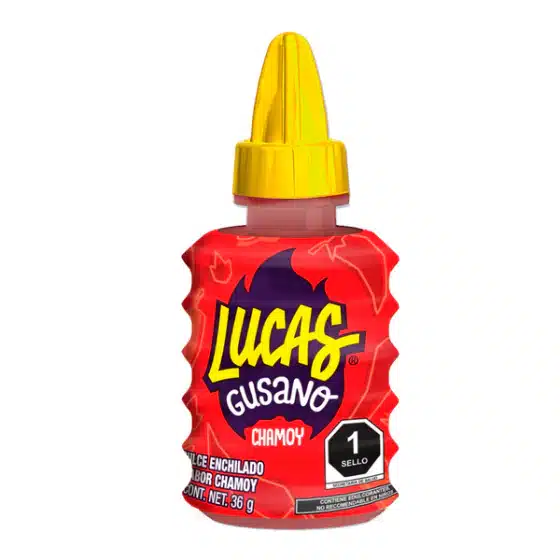
Lucas Gusano is a “hot” liquid confection, which denotes that it is quite piquant. When you first glance at it, you might be confused about how to consume it because it is a liquid treat. You can, however, drizzle this spicy candy over any dish to get a taste of Mexico right away. You can also consume it by itself by simply pouring it into your mouth, for those of you who are brave.
Actually, the item is intended to be a topping for fruit, potato crisps, or even nuts. The taste is simultaneously salted, sweet, and sour, with fiery, spicy chilies added for spice.
The amount of spice in this confection has shocked many people. Even if you enjoy fiery food, this sweet delight has a powerful flavor of added sourness that makes it slightly more potent than just spicy food. Some people use this candy as a seasoning in a variety of meals, so it’s important to find it both in powdered and liquid form.
Fiery and acidic Lucas Gusano consists of water, iodized salt, citric acid, modified cornstarch, chile powder, dextrose, caramel color, sodium benzoate, and potassium sorbate as preservatives, xanthan gum, ascorbic acid, artificial taste, and sucralose.
The tamarind, a tropical hardwood tree that yields bean-like fruits packed with seeds and fibrous flesh, is favored in Mexico for its sweet yet sour flavors. The meat from these brown pods is what’s used to make amazing sweets because it gives sweet treats a unique taste.
Salsagheti
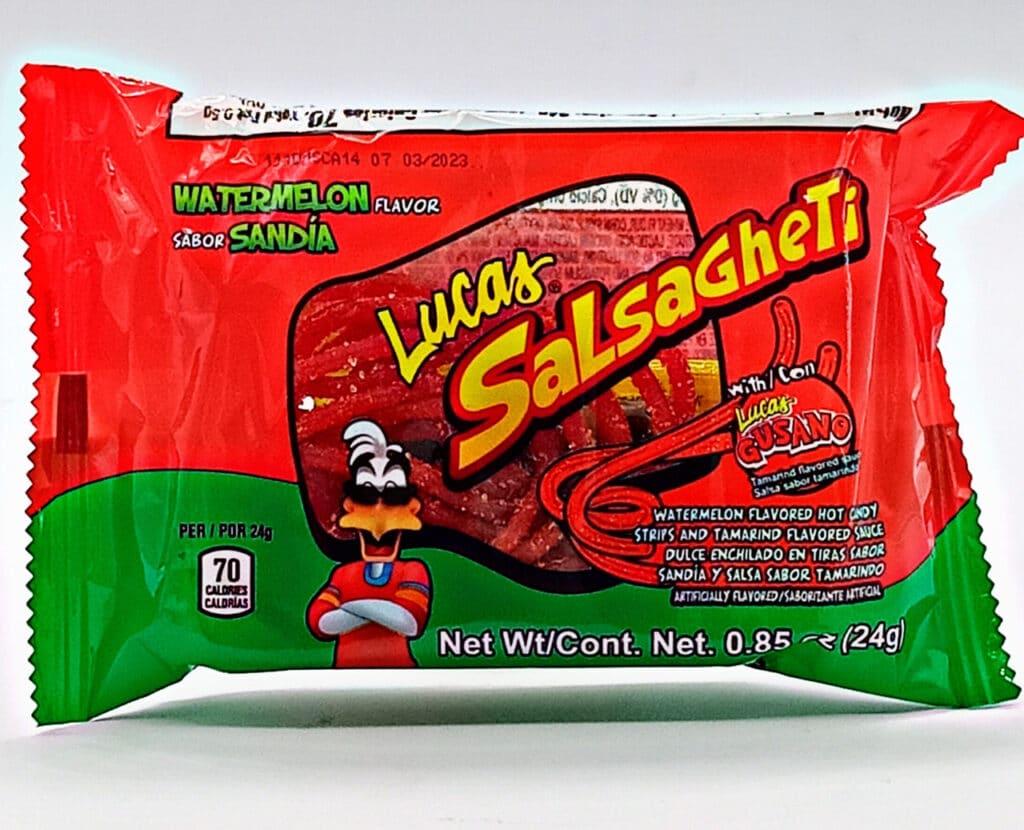
These tubular Lucas Candy known as Salsagheti, have a tart watermelon taste and are dusted with fine chili-tamarind powder and sugar crystals. The salsa for the fruity pasta comes from a sachet of tamarind sauce. Candy skeptics caution that while it may appear to have a gooey caramel consistency, it actually has a runnier texture that is more like “packed turkey sauce.“
Salsagheti is intended to be consumed without silverware and is sweeter and sourer than a typical Italian meal. Some people even complain that it is too messy to ladle the tamarind packet on top of the chewy threads, but it is also difficult to drop the candy into a smooth puddle of sauce.
Unsurprisingly, children love this sticky, chaotic, participatory-flavored Lucas Candy snack all over Mexico. Salsagheti is well-liked by adults as well. It isn’t just famous at birthday parties, celebrations, and festivals. One cook even went so far as to create a meal using Tajin, Salsagheti, four other kinds of Mexican candy, and different fruits, such as cucumber, peanuts, and chamoy. There are also unconventional ways to incorporate Salsagheti into a healthy dinner.
Lucas Chilli Powder
Early in the twenty-first century, there was a well-known candy brand of chili pepper under the brand name Lucas that was offered in the United States. It was no longer possible to buy Lucas chile peppers after the manufacturer went out of business in 2006. There are a few hypotheses as to why the business failed, but the most probable reason is that as Hispanic food became less famous in the US, so did the desire for chili powder.
Controversies Regarding Lucas Candy
Lead can be toxic if consumed in significant amounts. Due to the condition, learning can become challenging, recollection can become cloudy, and focusing can become challenging. Seizures and other adverse nervous system consequences are also possible.
Mexican chile and tamarind candies typically contain some lead, though the amounts differ. Although the exact amount of lead in each candy is unknown, it’s essential to keep in mind that consuming it can be risky.
When consumed in high doses, lead can be toxic and contribute to several health issues. You must be mindful of the potential risks associated with ingesting goods contaminated with lead, as well as the potential for consuming chili and tamarind candies from Mexico if you do not already have them.
A powdery confection called Lucas Limon was made in Mexico by a division of Mars, Inc. A piece of the confectionery was found to contain lead in 2004. The product’s production ceased in 2000, but lead-tainted confectionery was found in 2007 at a San Jose sweets distributor.
Candy brands like Chaca Chaca, Vero Mango, Super Lucas, and Bolorindo, which contain up to 12 milligrams of lead per piece, are examples of lead-containing candies. While the packaging is tainted with lead, some of the confectionery is lead-free.
Logo

Ingredients
- Sugar
- Iodized Salt
- Citric Acid
- Chili Powder
- Less than 2% – Silicon Dioxide, Coloring (Red 40 Lake), Artificial Flavor.
Nutrition
| Serving Size: | 1 serving (20g) | % Daily Value* |
| Amount Per Serving | ||
| Calories | 70 | |
| Total Fat | 0g | 0% |
| Saturated Fat | 0g | 0% |
| Trans Fat | ||
| Cholesterol | 0mgs | 0% |
| Sodium | 620mg | 27% |
| Total Carbohydrates | 18g | 7% |
| Dietary Fiber | 0.5g | 2% |
| Sugars | 16g | |
| Added Sugars | 16g | 32% |
| Protein | 0g | |
| Vitamin D | 0mcg | 0% |
| Calcium | 0mg | 0% |
| Iron | 0mg | 0% |
| Potassium | 0mg | 0% |
- The % Daily Value (DV) tells you how much a nutrient in a serving of food contributes to a daily diet. 2000 calories a day is used for general nutrition advice.
Pictures
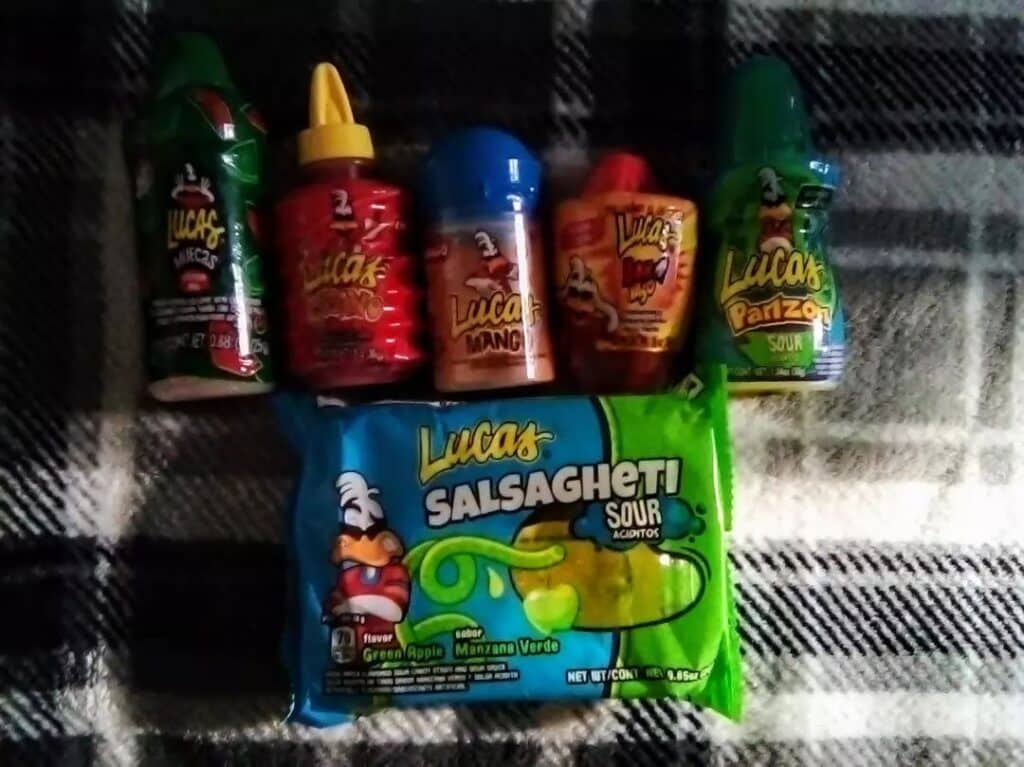
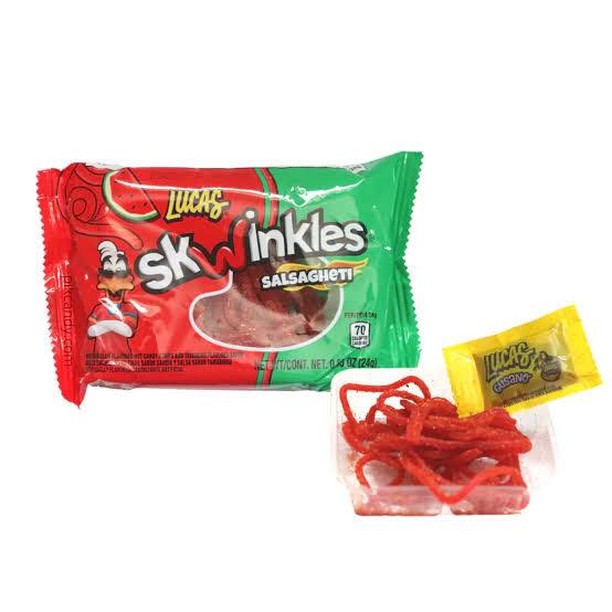
Bottom Line
All in all, Lucas Candy is arguably one of the most well-known Mexican confectionery and food companies. They are best known for their emblem, which features a duck wearing eyeglasses.
With a wide range of both classic and innovative sweets, Lucas has something to offer for every taste preference. Despite being 120 years old, the company remains family-owned and operated, with successive generations carrying on its traditions and commitment to quality.

Nato is a content writer and researcher with a background in psychology. She’s passionate about writing about the candy industry and exploring the cultural significance of sweets and treats. She believes that the stories behind our favorite snacks can reveal a great deal about our values.
Please leave a review or any memories of this snack in the comments below. Thank you!
Click here for a full A-Z list of Snacks and Candy
